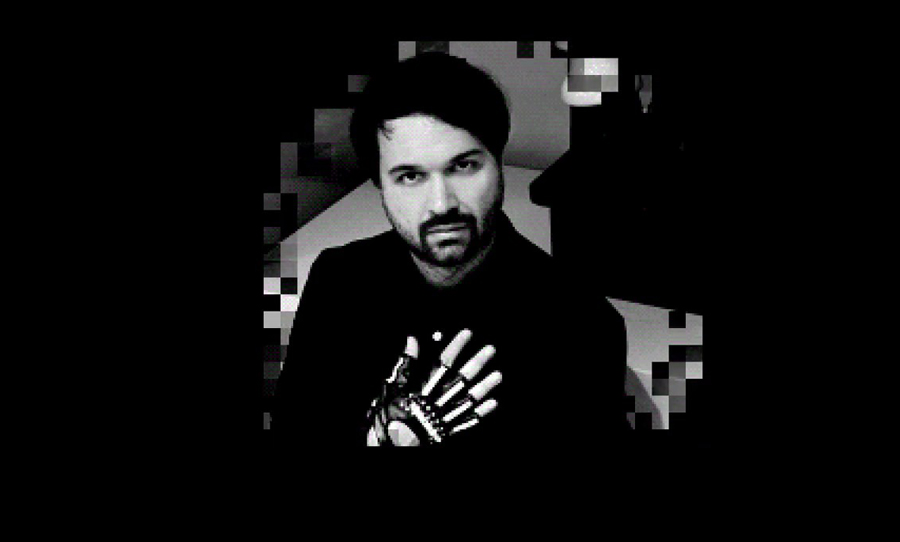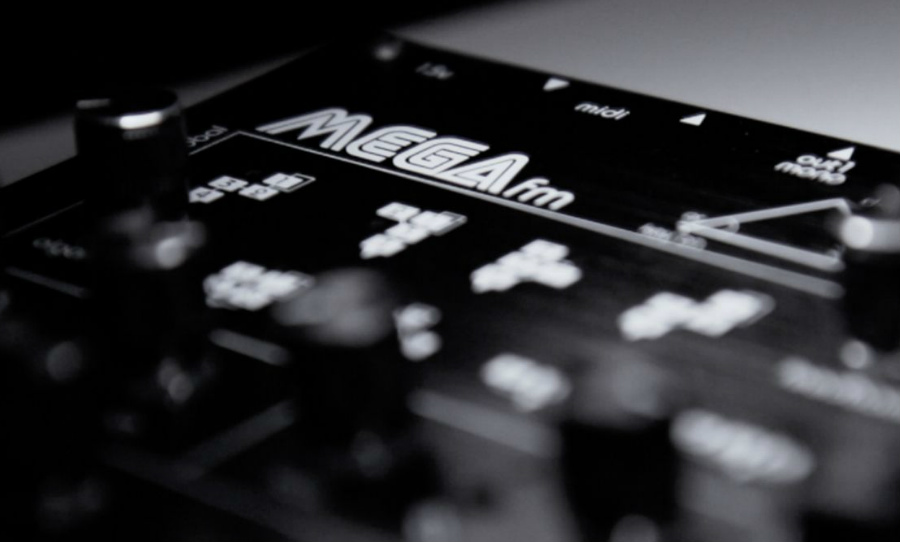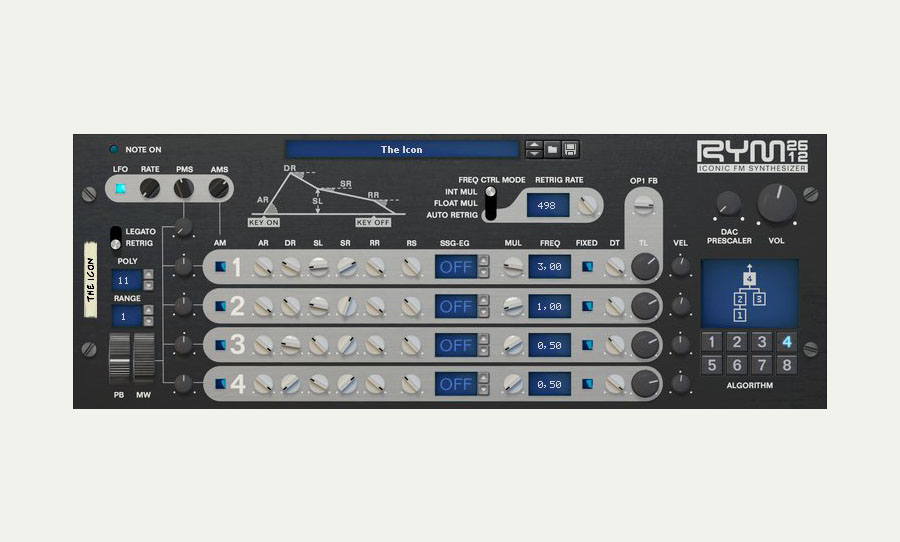Few embrace the limitations of technology like German producer Remute. Transitioning from the well-trodden path of the modern DAW to the floppy disk and cartridge, he epitomises the fulfilment that’s within reach when you follow your inspiration.
On his latest release, Technoptimistic, Remute fully embraced the spatial limitations of the Sega Mega Drive cartridge, finding a new way of creating art along the way. The result is a techno album and visual aesthetic like no other.
We chatted with Remute about his chaotic environment, the rebirth of old tech and the distillation of songs to their essence.
We talked with German techno producer Remute about his unique workflow, analog trinkets and following a childhood inspiration.
ENMORE AUDIO: Despite using unconventional mediums like floppy disks and cartridges, do you have a conventional studio setup? A desk, monitors, things like that?
REMUTE: My studio is full of wires, pretty chaotic, convoluted and full of computers looking and sounding like huge refrigerators. I need this kind of industrial and raw technological atmosphere in my studio – I just cannot be creative in a sleek, tidy room.
Of course, also lots of beloved vintage synths are hidden between the computer towers and are in use every day. My monitors are some 80s Hitachi ones. They’re not very hi-fi, but I know and trust them 100% for almost 20 years now.
I mix on an older Soundcraft desk to add some analogue imperfections and distortions here and there. Funnily, I have a lot of stuff, but for Technoptimistic I really just used a half-wrecked Linux netbook and a Sega Genesis.
ENMORE AUDIO: What got you into making music?
REMUTE: My parents bought me a Commodore C64 when I was 5 years old. The unique sound of the SID-chip had a huge impact on me. From there on I became a little computer and gaming freak and started to enjoy especially the music of video games.
When I was around 9 years old and was totally into the Sega Genesis, its gritty FM-sound and the game Streets Of Rage (which has an incredible techno soundtrack!). I decided that I want to make music sounding like this – that was my first conscious contact to techno, electro and house music of the early 90s.
Then I dived deep into technology. Tinkering and communicating with computers and technology became my passion and ever since my music has been an ‘audio-protocol’ of these extensive conversations with the machines.
ENMORE AUDIO: What inspired you to work with floppy disks and cartridges? Was there a turning point? Or have you always worked with them?
REMUTE: My 2017 album Limited, which got released on 7” vinyl and 3,5” floppy disk, was a turning point for me. Before that, I used common DAWs, but after years of working the ‘conventional way,’ I had the feeling that making music became too streamlined – I drowned in possibilities and hardly came up with something substantial.
So I’ve chosen the path to limit myself by using very limited technology like the floppy disk (no more waste of time with terabytes of sampling libraries!). The essence of a song, the essence of an idea, had to fit onto 1,44 megabytes of the floppy disk and I had to creatively work my way around these limitations.
A small room is easier to decorate than a large hall you get lost in. This thought boosted my creativity and it has become my mantra.
Technoptimistic which got released onto a Sega cartridge, is a continuation of this process and made me decorate even smaller rooms. Some songs of this album are even just a few kilobytes in size and pure code that communicates directly and in realtime with the soundchip of the console.
With Technoptimistic I fully turned from a musician into a music programmer.
ENMORE AUDIO: Are there any pieces of gear that are essential to your process?
REMUTE: I am still using my vintage gear quite often. Stuff like the Roland TB-303, Juno 106, Yamaha TQ5, Technics WSA1 or the Ensoniq ASR-10 are still amongst my favourites. Of course, everything can be emulated nowadays, but it’s the tedious – yet fun – way of working with various interfaces that still turns me on.
For Technoptimistic, I only used a netbook running the software Deflemask on it. With this software (and a few very short samples recorded from my vintage gear) I wrote the complete album and then transferred it onto the Sega Genesis cartridge.
ENMORE AUDIO: On Technoptimistic, there’s a message of embracing the digital age. Yet, the medium you’ve chosen is a Sega Mega Drive cartridge – a comparatively old school technology. Is there a contradiction there?
REMUTE: I do not see a contradiction here. I’ve embraced old technology and turned it into something new. With some heavy tweaking and tinkering I turned the old Sega console into a modern sounding synth.
I am very (tech)noptimistic that even old technology still has some undiscovered potential and discovering potential, in the best cyberpunk manner, is something essential in the digital age.
ENMORE AUDIO: What’s the process for a project like Technoptimistic? Are you fleshing out musical ideas on instruments outside the software world? Or is it all “in the box”?
REMUTE: Technoptimistic was completely written on a half wrecked old Linux netbook running the software Deflemask on it. I almost wasn’t using any more outboard equipment at all for this except for recording some very short samples here and there. It was all written note by note, on a computer keyboard.
With Deflemask I created the files, the code that later got transferred onto the cartridge. It’s this code that makes the soundchip play the music – there is not a single recorded song on the cartridge. All music gets generated in realtime when the listener switches the console on and presses play.
ENMORE AUDIO: What challenges did you have to overcome in the making of the album?
REMUTE: I had to compress my ideas and my vision into very very little data space. I got rid of all ballast and really focussed on the absolute essence of a song. When you only have 4 megabytes you cannot drop in some data hungry prerecorded loops or sequences into the composition. You have to enter everything note by note and from scratch.
But I really liked this process and I am very happy in the end. I have the feeling that every note makes sense and that the communication with the machine was a pleasant one.
ENMORE AUDIO: Do you ever collaborate with other artists?
REMUTE: For Technoptimistic I collaborated with two very skilled coders and artists called Kabuto and Exocet. They both made incredible productions in the demoscene and are also very into embracing old technology and breathing new life into it.
Kabuto was mainly responsible for coding the music player engine and 3D engine of the video clip that’s also on the cartridge, while Exocet is responsible mainly for the graphics and animations. We published an in depth ‘making of’ via Hackaday.
ENMORE AUDIO: Do you have any inspirational heroes in production?
REMUTE: Nikola Tesla.
ENMORE AUDIO: What are some of your goals for the future?
REMUTE: I am working hard on a Technoptimistic live tour later this year. That will be me conducting an orchestra of consoles and synths: FM sound heaven! It will all be about technology, code and interaction with machines, but in a fun way.
I want to redefine ‘techno’ as the most technologic, well technoptimistic, genre.
Visit Bandcamp to find out more about Remute.



